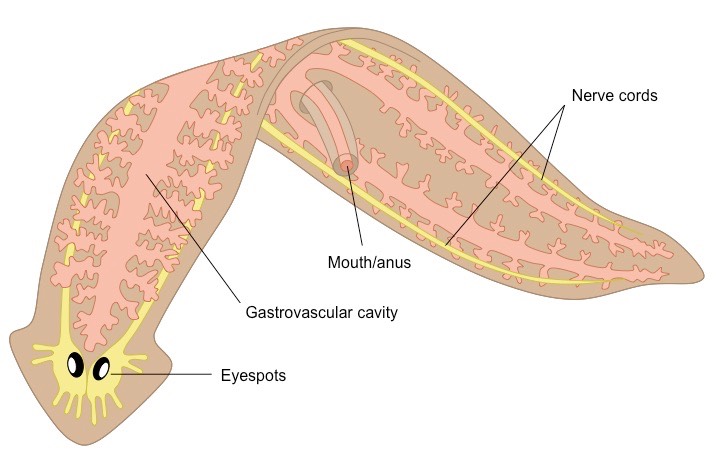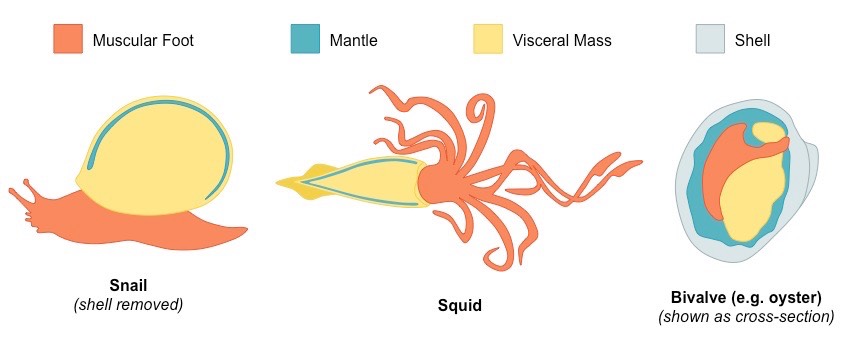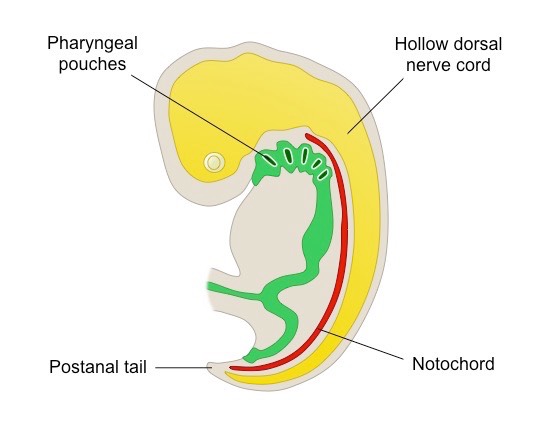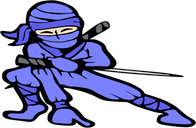Animal phyla can be differentiated according to a number of features of increasing complexity
- These features include body symmetry, number of body openings, body segmentation and the presence of a notochord
Body Symmetry
- Body symmetry describes the alignment of body parts around a central axis (radial = circular plane ; bilateral = linear plane)
- Porifera are the most primitive of animals and lack any body symmetry (asymmetrical) as they have no true tissues or organs
- Cnidaria are sedentary or slow moving and have radial symmetry, so as to experience the environment equally from all directions
- All other animals have bilateral symmetry, which promotes development of a head and allows for streamlined, directional movement
Types of Body Symmetry

Body Openings
- Porifera are the most basic invertebrate and have no body openings – instead they exchange materials through pores
- Cnidaria and platyhelminths have a singular body opening, leading to a saccular digestive system
- All other specified phyla have two body openings (i.e. a separate mouth and anus), resulting in a tubular digestive system
- Having two body openings allows for specialisation of digestive processes as food is travelling in a single direction
Platyhelminth – Saccular Digestive System

Body Segmentation
- Segmentation of body parts allows for the specialisation of function in these different areas
- Organisms with more basic body plans (including porifera, cnidaria and platyhelminths) lack distinctive body segmentation
- Organisms with more developed body plans have segmented bodies (e.g. annelids, mollusca, arthropoda, chordata)
- Sometimes body segmentation may not be clearly visible – all molluscs have a mantle, visceral mass and muscular foot but these segments may not be readily apparent through visual inspection
Body Segments in Mollusca

Chordates
- All chordates share four key features: a notochord, a hollow dorsal nerve tube, pharyngeal slits and a postanal tail
- These features are always present in an embryonic state, but might not always persist into adulthood
- In vertebrates (a sub-phyla), the notochord is largely replaced and surrounded by vertebra, forming a backbone
Chordate Features

